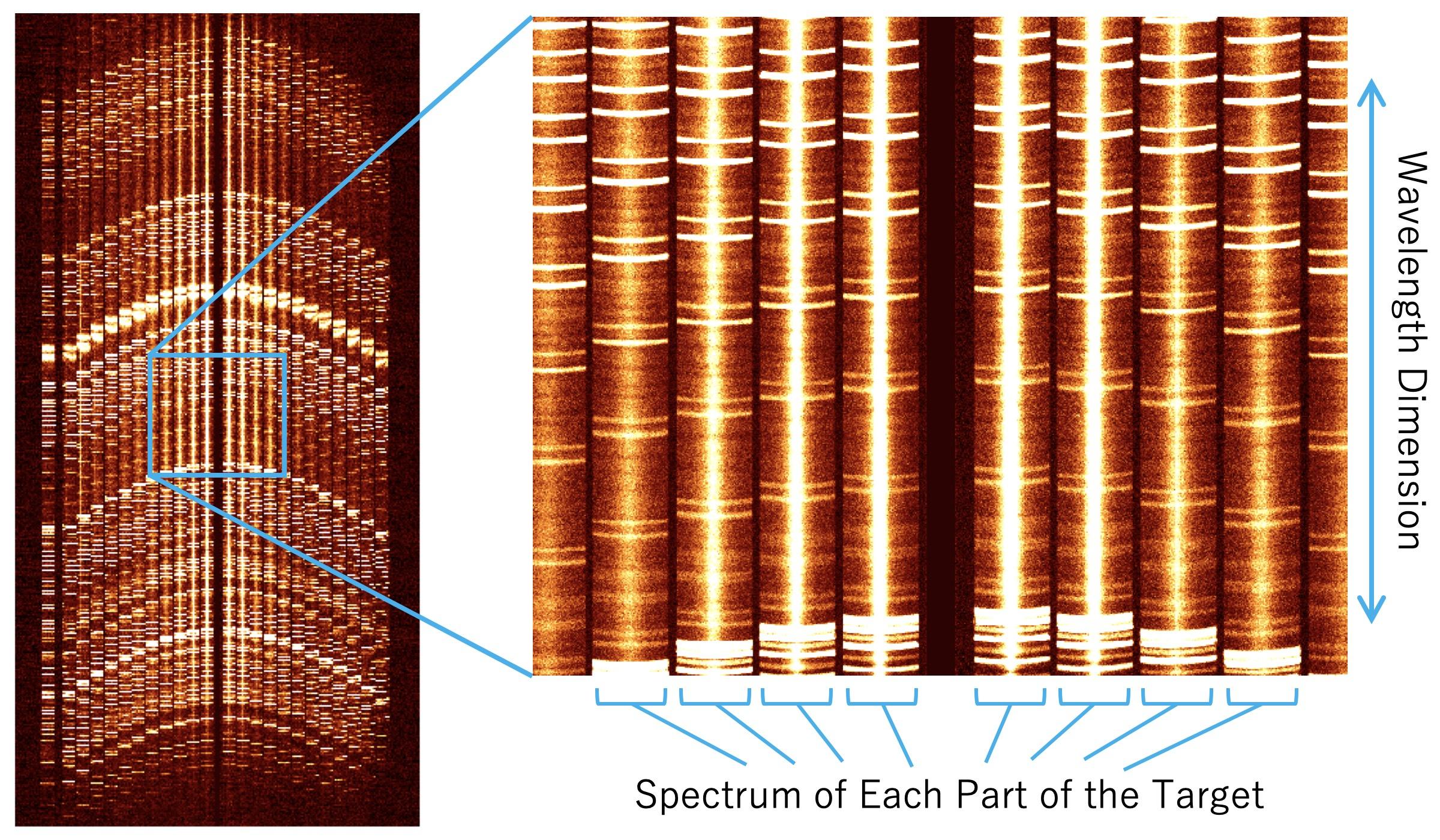The new integral field spectroscopy mode of the Faint Object Camera And Spectrograph (FOCAS) on the Subaru Telescope started open-use observations in June 2019. Integral field spectroscopy is an observation method that can obtain the spectrum of each part of an extended object, such as a nebula or galaxy, with a single exposure. This capability is expected to play an important role in research such as galactic evolution and other fields since it enables us to investigate differences in the physical conditions at different locations, in detail and across the entire object.

Figure 1: A scene of open-use observation using the integral field spectroscopy mode of FOCAS. The observers are waiting for data to be read out from the instrument and displayed. (Credit: NAOJ)
FOCAS is a basic observational instrument for high-sensitivity observation in visible light, which has been active on the Subaru Telescope since 2000. Using FOCAS, researchers can perform "imaging observation" to obtain astronomical images, and "spectroscopic observation" to obtain spectra of astronomical objects.
FOCAS has made a number of scientific achievements such as capturing the distribution of the hydrogen gas ejected from the starburst galaxy M82 at high resolution with the imaging mode, and identifying the most distant galaxy (at that time) with spectroscopy mode. In particular, in the spectroscopy mode, the instrument also has the ability to simultaneously capture the spectra of about 50 targets in the field of view, enabling statistical research on many objects to be performed efficiently.
However, it was not possible to obtain spectral information in imaging observations; nor was it possible to capture the spatial distribution of a target in spectroscopic observations. Therefore, for detailed research of extended objects such as galaxies, integral field spectroscopy which can obtain the spectrum of each part of the target has been developed, and recently recognized as an important observational method together with imaging and (conventional) spectroscopic observation.
The first science target of integral field spectroscopy with FOCAS was a distant galaxy that is gravitationally lensed by another, foreground galaxy. "FOCAS is the only instrument in the northern hemisphere that has an integral field spectroscopic mode covering a wide field of view and wide wavelength range," says Dr. Russell Smith from the Centre for Extragalactic Astronomy, Durham University, United Kingdom, who was the principal investigator of the observation.

Figure 2: First scientific data obtained with the integral field spectroscopy mode of FOCAS. The right is an enlarged view around the center. The vertical direction corresponds to the wavelength. The spectrum of each part of the galaxy is captured over the entire image. (Credit: Smith et al.)

Figure 3: (Left) Image of an elliptical galaxy reconstructed from the data taken with the integral field spectroscopy mode of FOCAS. (Center) Image of a distant galaxy that is lensed by the foreground elliptical galaxy. The lensed galaxy becomes detectable only after subtracting the emission from the foreground elliptical galaxy. An arc-like structure, which is characteristic of a gravitationally lensed object, is clearly seen. (Right) Spectrum taken at the blue circle in the central image. The spectrum of just the celestial object (green line) is derived by subtracting the spectrum of the black field (orange line) from the raw spectrum (blue line). The emission lines from the distant galaxy are clearly detected between the lines from the Earth's atmosphere. (Credit: Smith et al.)
"The integral field unit (IFU) that enables the integral field spectroscopy required parts with high processing accuracy despite their complex shapes. It was a major technical issue whether or not those parts could be manufactured. Thanks to the great efforts of engineers and technicians at the Advanced Technology Center (ATC), National Astronomical Observatory of Japan (NAOJ), the parts were successfully manufactured with satisfactory quality (Note 1)," says Dr. Shinobu Ozaki from the TMT-J Project Office, NAOJ, who led the development of the IFU for FOCAS. "The Thirty Meter Telescope (TMT) will have an instrument with an integral field spectroscopy function. I hope the successful beginning of integral field spectroscopy with FOCAS on the Subaru Telescope will enhance astronomical research capability in Japan, and lead to good science cases at TMT."
Dr. Takashi Hattori, Senior Instrument Research Specialist at the Subaru Telescope, expresses pleasure about the next stage of FOCAS, "FOCAS is an instrument that has already been used for nearly 20 years. We have been making efforts to maintain its competitiveness by adding new functions and improving its capabilities. I am delighted that the integral field spectroscopy mode is increasing the number of FOCAS users."
The development of the IFU for FOCAS is supported by KAKENHI Grant Number JP26400236, and the grant-in-aid of NAOJ for TMT strategic basic research and development.
(Note 1) An explanation of integral field spectroscopy and the development record of FOCAS IFU at ATC, NAOJ are available here.


